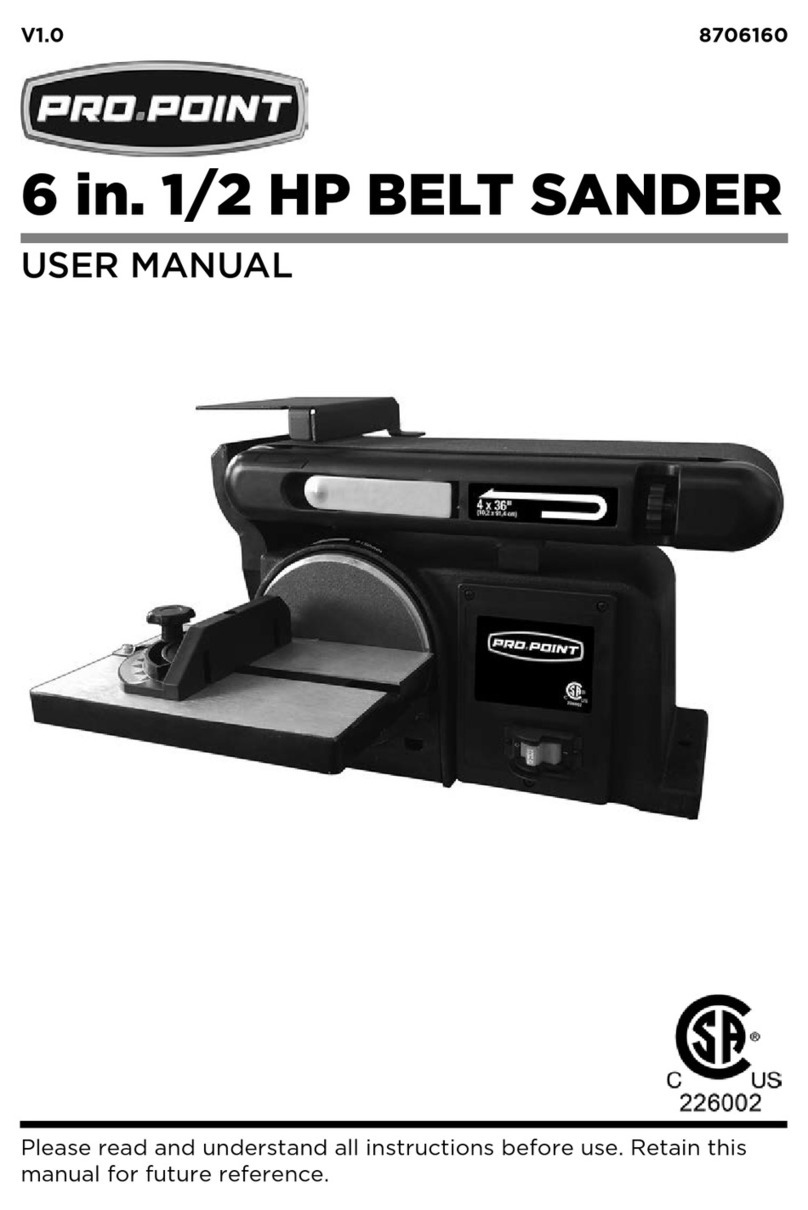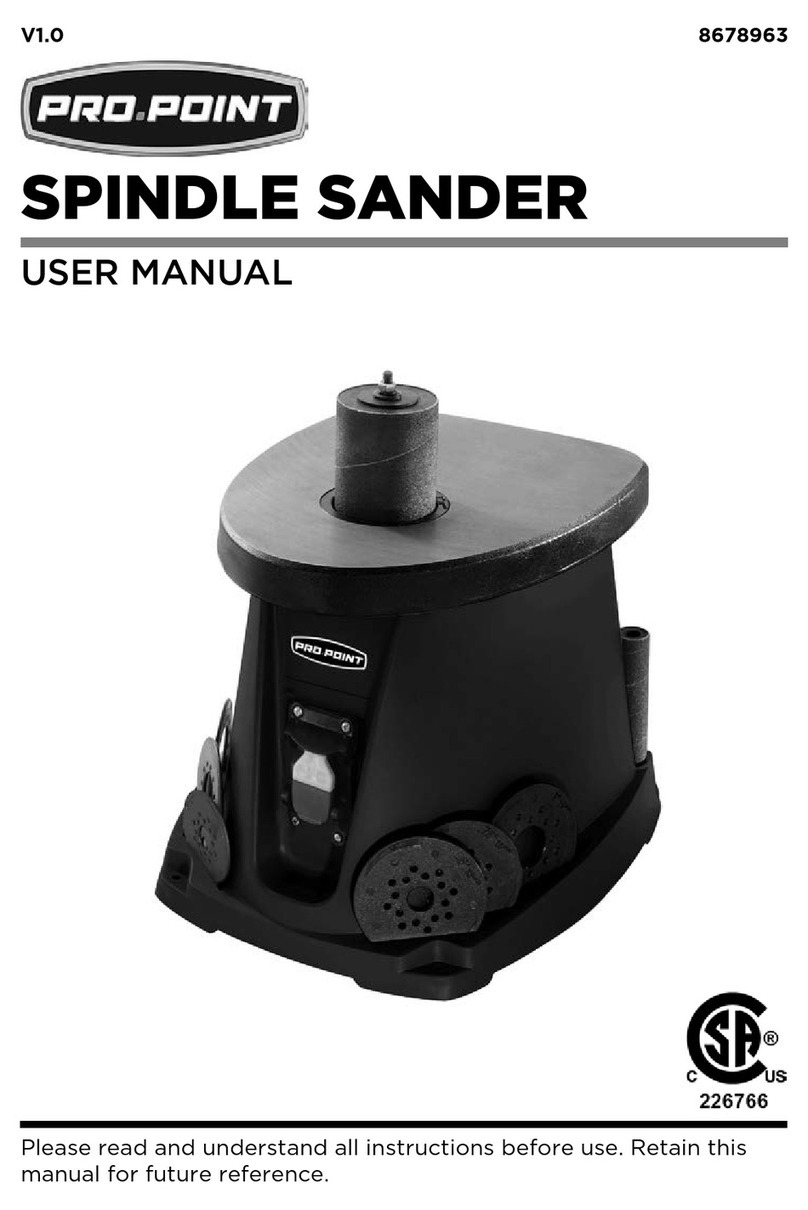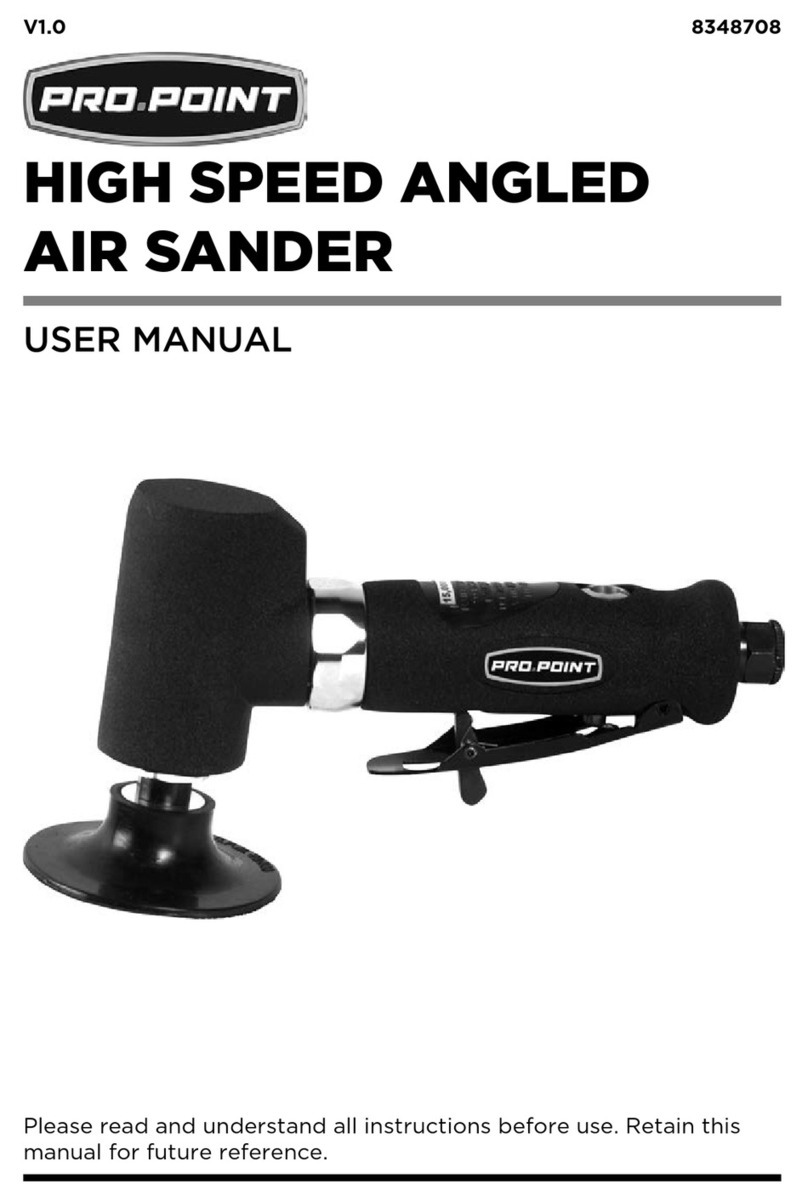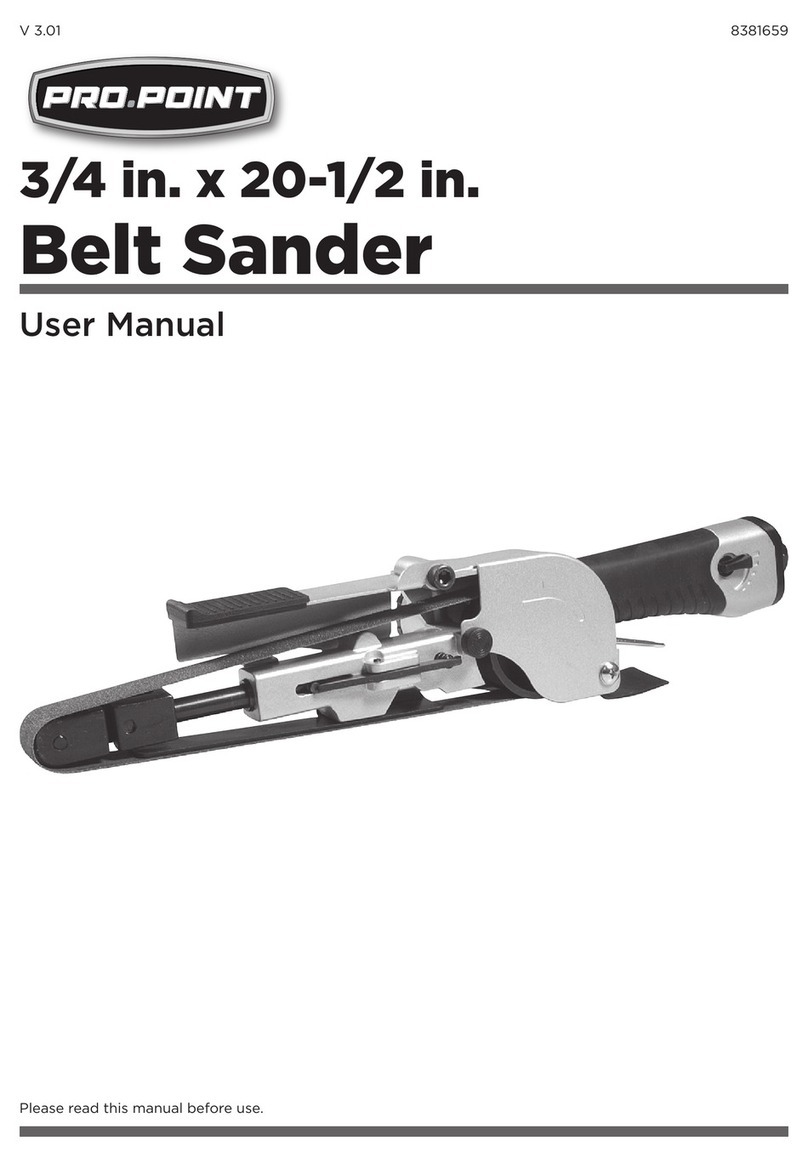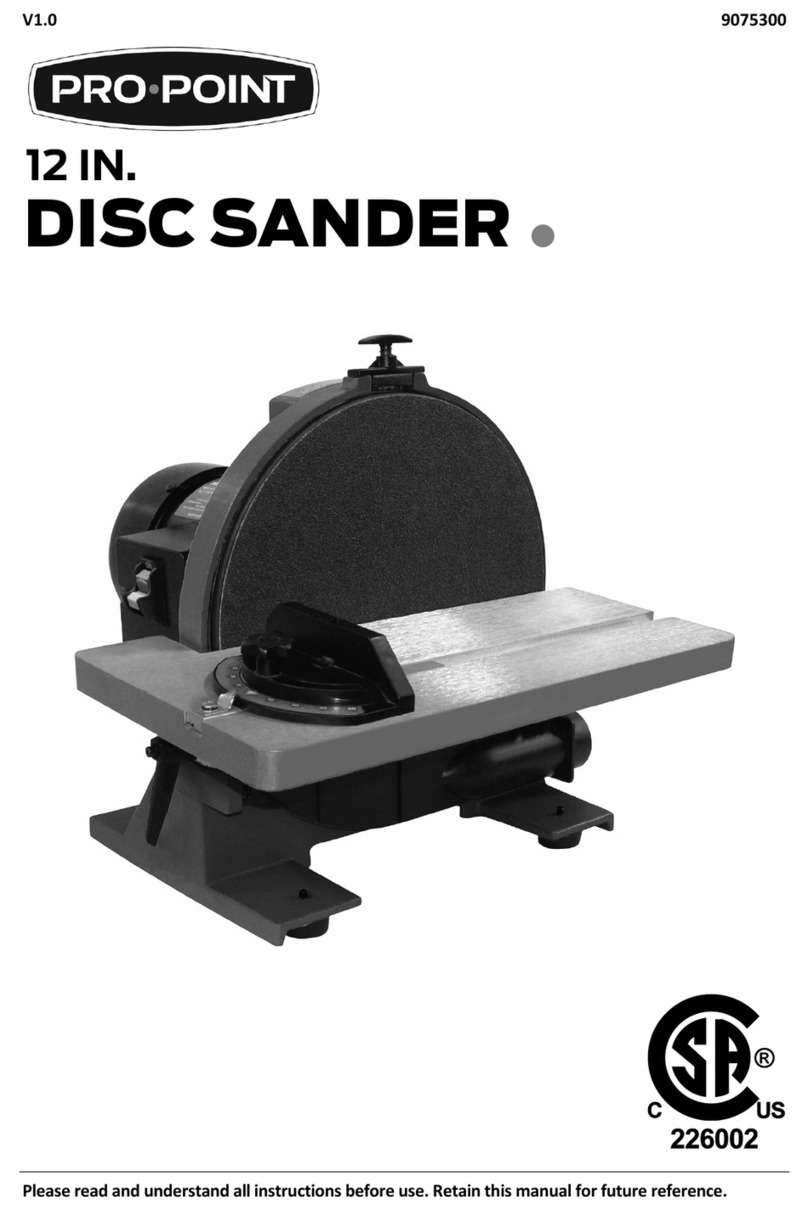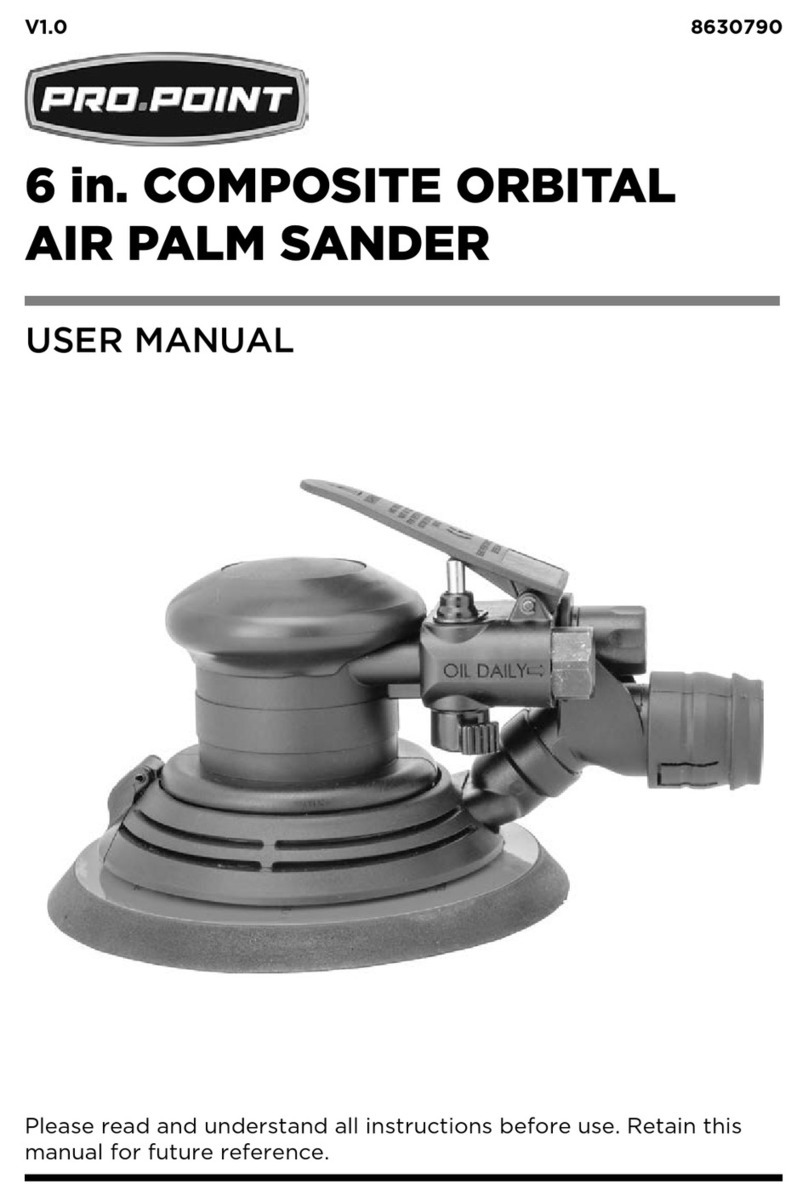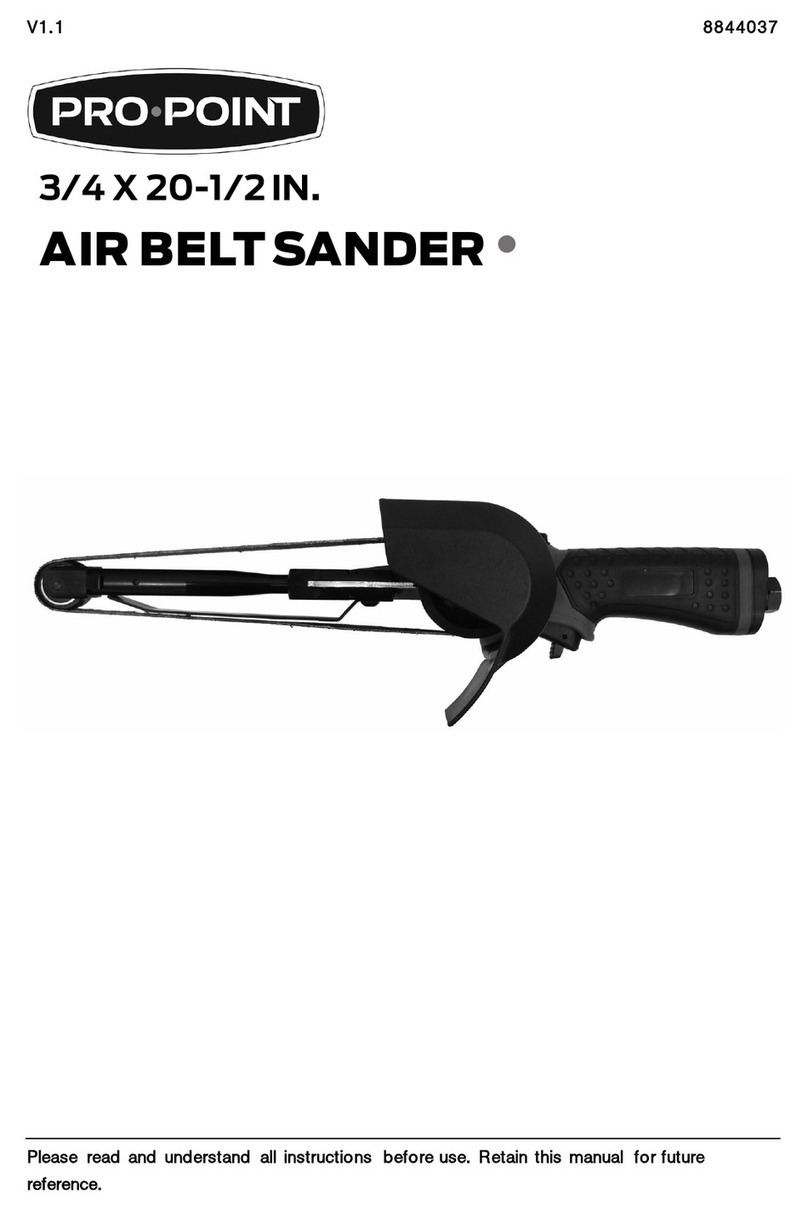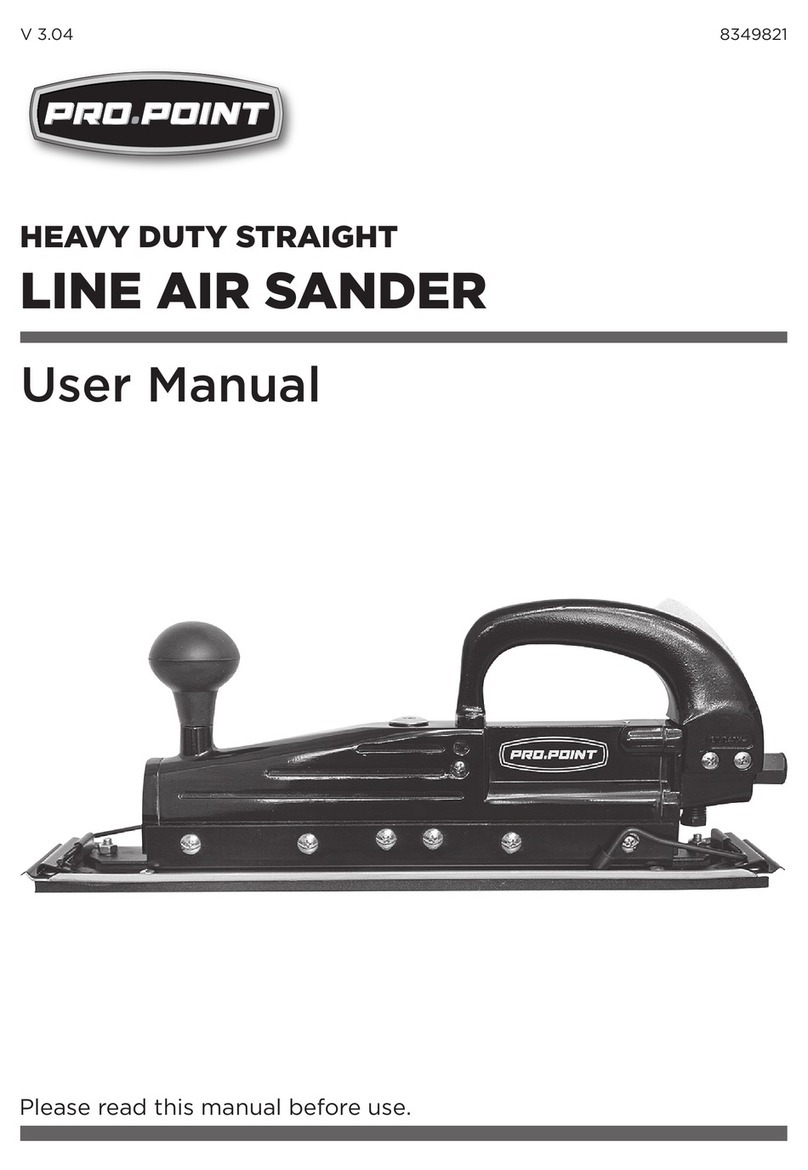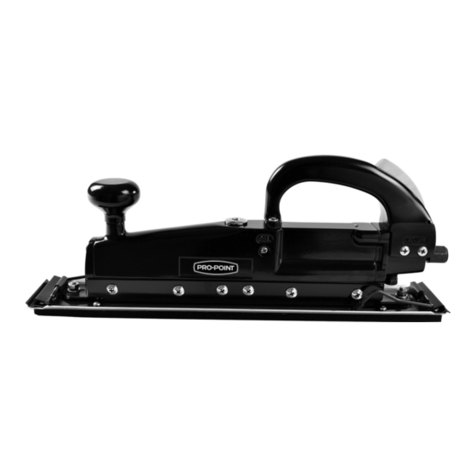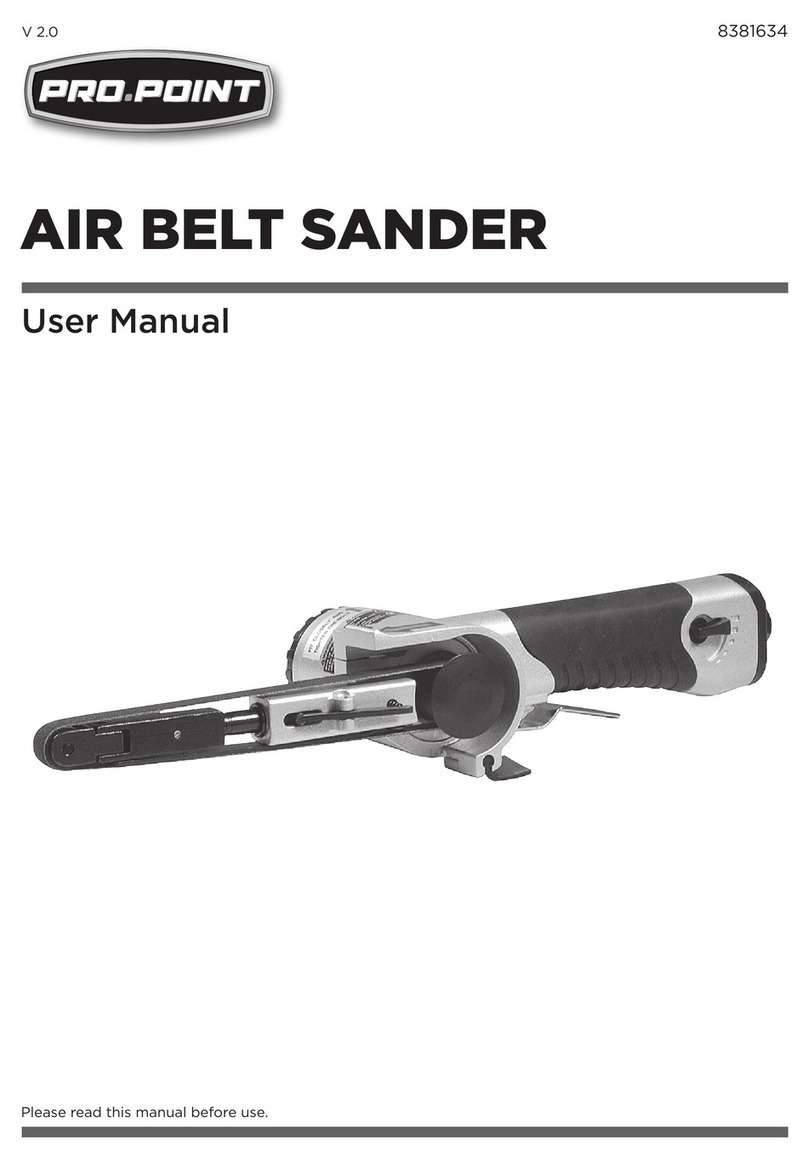
8844144 6 in. Dual Action Air Sander V1.0
6 For technical questions call 1-800-665-8685
13. Never touch the tool accessory or workpiece during or immediately
after use. They may be hot and could inflict a burn injury.
14. Do not place the tool down until the tool’s accessory has stopped
moving. The accessory may catch the surface of work material and
wrench itself free, causing injury to the user or others in the work area.
15. Never run the tool unless the abrasive pad is applied to the workpiece.
AIR TOOL PRECAUTIONS
1. Use only clean and dry compressed air as a power source.
Contaminated or moist air will gradually damage the tool.
2. Install an in-line shutoff valve or regulator to allow immediate control
over the air supply in an emergency, even if a hose is ruptured.
3. Discontinue tool use if it does not work properly or air is leaking.
Tag or mark the tool as ‘defective’ or ‘out of service’ until repaired.
4. Check the manufacturer’s maximum pressure rating for air tools
and accessories. Compressor outlet pressure must be regulated to
never exceed the maximum pressure rating of the tool (see
Specifications). Exceeding the maximum PSI rating can create a
bursting hazard, causing injury and property damage.
5. Attach all accessories properly to the tool before connecting the air
supply. A loose accessory may detach or break during operation.
6. Never use oxygen, combustible gas or any other bottled gas as a
power source. Any power source other than an air compressor
could cause an explosion and serious personal injury.
7. Turn OFF the valve and discharge any remaining air pressure after
each use or before adjusting the tool.
8. Do not leave the air tool unattended with its compressed air supply
on. Turn off the compressed air supply and bleed the air tool of any
remaining compressed air before leaving the air tool unattended.
9. Serious injury may occur from loose debris being propelled at high
speeds from the compressed air stream. Always wear OSHA
approved safety glasses to protect the eyes during operation of the
air compressor.
10. Always turn off the air compressor and drain tank pressure
completely before attempting maintenance or attaching air tools.
Release pressure slowly from the system.
